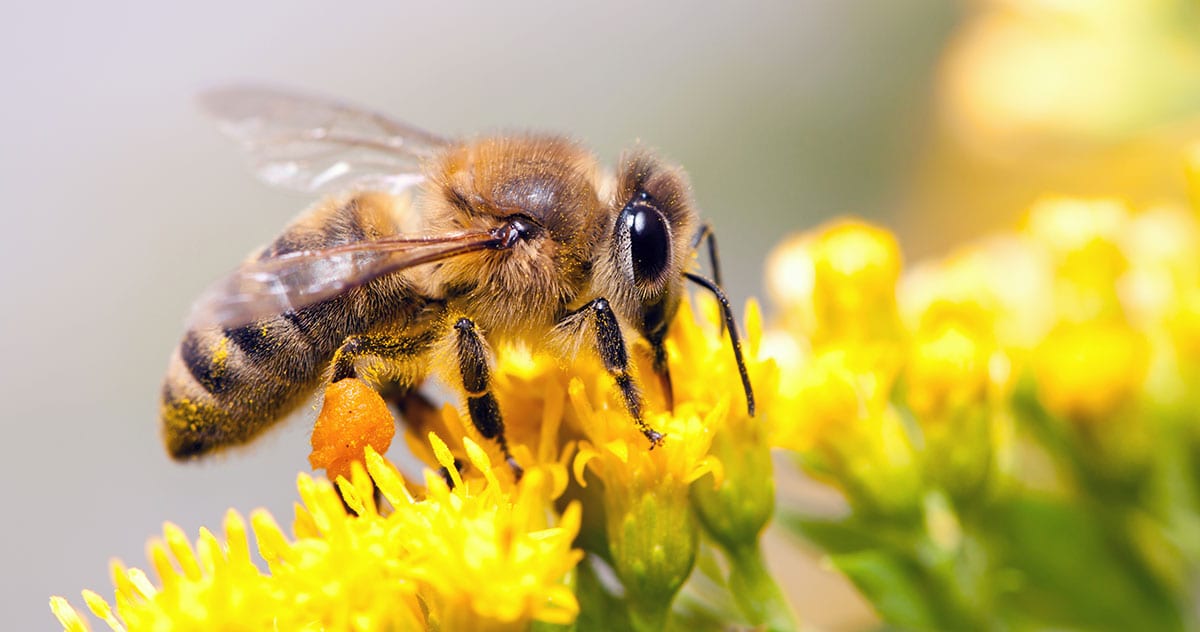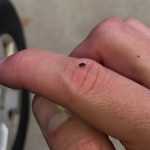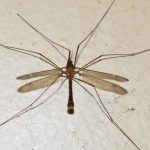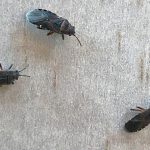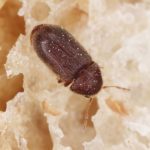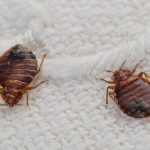Do you find yourself constantly swatting at honey bees around your home but don’t want to resort to killing them? As valuable pollinators, finding a humane way of removing them without causing harm is essential. Fortunately, there are several effective and safe methods available.
First things first – locate the hive. Watch the bees’ flight patterns and look for congregation signs in a particular area. Once you’ve identified the location, it’s time to consider removal options.
You could call a professional beekeeper who will safely relocate the hive to a more suitable spot. Alternatively, you can create a bee trap using a lure to attract them and then release them far from your property.
Another excellent method is prevention – discourage bees from being attracted to your property in the first place.
Cover any exposed food or sweet drinks, fix leaks, remove standing water, and plant bee-repellent herbs such as mint, eucalyptus, or citronella.
By following these steps, you can successfully remove honey bees from your home without causing harm.
Not only does it protect the bees, but it also provides a healthier and safer environment for you and your family.
Identifying the Location of the Hive
Contents
- 1 Identifying the Location of the Hive
- 2 How to Get Rid of Honey Bees Without Killing Them
- 3 Taking Necessary Precautions When Removing Honey Bees
- 4 Seeking Assistance from Professional Beekeepers or Pest Control Experts
- 5 Differentiating Between Honey Bees and Other Types of Bees
- 6 Learning About Local Laws and Regulations Regarding Honeybees
- 7 Creating New Hives for Relocated Honeybees
- 8 Conclusion
Honey bees are fascinating creatures that contribute to our ecosystem’s well-being by pollinating flowers and producing delicious honey.
However, when they decide to build their hives in inconvenient places like walls or eaves, it can be a problem. Luckily, we can safely remove these bees without harming them. The first step is to identify the location of the hive.
Observing the honey bee’s flight pattern is an easy way to locate the hive. Follow their path and track them back to their pack, which will be within a few miles. It’s like going on a treasure hunt, except you’re saving precious lives instead of finding gold.
Another way to locate the hive is by listening to bee activity. Honeybees make a distinctive humming sound when flying in and out of their pack. If you hear this sound, there is likely a beehive nearby. Search for the source of the sound and pinpoint the hive’s location.
You can also look for signs of bee activity, such as honeycomb, wax, or dead bees. These signs may indicate that there is a beehive nearby. Keep an eye out for large numbers of bees in a particular area.
But what if you can’t find the hive? Don’t worry; locating the pack can be challenging, especially if it’s hidden or inaccessible. In such cases, seek help from a professional beekeeper who can safely identify and remove the beehive.
In conclusion, identifying the hive’s location is crucial when safely removing honey bees without harming them.
By following their flight pattern, listening for bee activity, and searching for signs of bee activity, you can determine where the hive is located and take appropriate measures to remove it safely.
Remember, honey bees are vital pollinators that need protection while ensuring safety for ourselves and those around us.
How to Get Rid of Honey Bees Without Killing Them
Using a Bee Vacuum
Using a bee vacuum is one of the most effective ways to do just that.
Think of a bee vacuum as a gentle giant designed to safely and effectively remove bees from their nest without causing harm.
It’s specially designed to suck the bees into a container or hive body, which can then be transported to a new location where they can continue to thrive and pollinate.
However, before you use the bee vacuum, it’s essential to understand how to handle bees without making them feel threatened.
Bees can become agitated and defensive if they sense any danger, so it’s critical to approach them calmly and slowly while wearing protective gear such as bee suits, gloves, and veils.
Start using the bee vacuum at the bottom of the nest and work your way up. This will prevent any bees from falling onto your property or other areas. Once all the bees have been removed from the nest, seal it tightly to prevent other bees from moving in.
It’s worth noting that not all bee vacuums are created equal. Some models may not be powerful enough to remove all of the bees from their nest, while others may be too harsh and cause harm to the bees.
Therefore, it’s essential to research and choose a high-quality bee vacuum designed specifically for removing bees safely and effectively.
In conclusion, using a bee vacuum can be a fantastic solution for removing bees from your property without causing any harm. With careful handling and the right equipment, you can safely relocate these important pollinators to a new home where they can thrive.
Utilizing a Trap-Out Method for Relocation
The trap-out method is the perfect solution for you. This method involves placing a one-way exit cone over the entrance of the honey bee colony, allowing the bees to leave their hive but preventing them from returning.
It’s like giving them an all-access pass to the outside world but not being allowed back into their old home.
Once the bees have left their old hive, a new hive box is placed near the entrance with some frames of comb and honey inside. The bees will be attracted to the new pack and start creating a colony. It’s like moving into a new home – they’ll need some familiar items to feel at ease.
While this process may take several weeks, depending on the colony’s size, monitoring progress regularly and ensuring that all bees have left their old hive before sealing it up is essential.
Think of it like clearing out your closet – you want to ensure everything is gone before starting fresh.
Hiring a professional beekeeper with experience with trap-out methods for relocation is crucial. They will have the necessary equipment and knowledge to ensure the process is carried out safely and effectively.
Like trusting an experienced contractor when renovating your home, you want to trust an expert when relocating honey bees.
Taking Necessary Precautions When Removing Honey Bees
Safety is the top priority, both for the bees and the person performing the removal. To ensure a smooth and safe process, there are necessary precautions that one must take.
Firstly, protective clothing is crucial. A bee suit, gloves, and veil protect you from getting stung. Think of it like wearing a superhero costume – your shield against an attack.
Timing is also critical when removing honey bees. Early morning or late evening is best when bees are less active and likely to be inside their hive.
Avoid using pesticides or other harmful chemicals that could harm the bees or contaminate their honey – this is like using a flamethrower to eliminate an ant.
Before removing the bees, identify the bee species and determine if they are honey bees. If they are honey bees, consider relocating them instead of exterminating them. Professional beekeepers may be able to remove the bees and relocate them without harming them. It’s like hiring a moving company for your furry little friends.
Lastly, consider the location of the bees before attempting removal. If they are in a hard-to-reach area or a place that poses a safety risk, it’s best to call a professional bee removal service.
In conclusion, taking necessary precautions when removing honey bees is vital for everyone’s safety and well-being. Remember to suit up, time it right, avoid harmful chemicals, identify the species, and consider the location before attempting removal.
Seeking Assistance from Professional Beekeepers or Pest Control Experts
Firstly, professional beekeepers are trained to handle bees and can relocate them to a safer location. They will also advise on how to prevent future infestations, as they understand the behavior of honey bees. Think of them as guardians of the bees, ensuring they are safe while protecting your property.
Secondly, pest control experts are like detectives of bee infestations, equipped with specialized equipment and safe pesticides to remove the bees humanely. They can also advise on how to seal gaps or cracks in your home to prevent future infestations.
When choosing a professional, make sure they specialize in humane bee removal. Not all pest control companies are equipped to handle honey bee removals.
By seeking assistance from professional beekeepers or pest control experts, you can rest easy knowing that the honey bees will be safely relocated without harm. Additionally, they can offer advice on how to prevent future infestations, giving you peace of mind.
In conclusion, don’t let a honey bee infestation ruin your outdoor relaxation time. Seek help from professionals with the expertise to humanely remove bees and protect both you and the bees.
Differentiating Between Honey Bees and Other Types of Bees
Firstly, let’s talk about physical appearance. Honey bees are smaller and slimmer than bumblebees, with a more elongated body shape. They also have those iconic black and yellow stripes on their abdomen that make them stand out from the crowd.
So, if you see a bee sporting these distinctive stripes, you can be sure it’s a honey bee.
But physical appearance isn’t the only factor that sets honey bees apart. Their behavior is also quite distinct. Honey bees are known for their docile nature and are generally not aggressive unless they feel threatened or their hive is disturbed.
Bumblebees, on the other hand, can be more aggressive and territorial, especially during mating season.
It’s crucial to note that honey bees play a vital role in pollination and are an essential part of our ecosystem. Therefore, it’s important to take extra care when attempting to remove them from your property.
Instead of resorting to harmful methods like insecticide or killing them outright, consider contacting a local beekeeper or professional pest control company specializing in live bee removal.
By properly identifying honey bees and understanding their behavior, you can safely and effectively remove them from your property without causing any harm to these valuable insects.
Learning About Local Laws and Regulations Regarding Honeybees
Before attempting to remove any bees from your property, research and understanding your area’s legal requirements is crucial.
Honeybees are often considered an essential part of the ecosystem and are protected by law in many regions. Removing bees without proper permits or authorization may result in legal consequences.
To avoid complications, it is best to determine whether you can remove them yourself or need to hire a professional beekeeper or pest control company with the correct permits.
In some areas, honeybees must be relocated rather than exterminated. This means they will need to be safely removed and relocated to a new place where they can continue to thrive without harming humans or animals.
This not only preserves the bee population but also ensures that the bees do not become a nuisance again.
Removing honeybees with proper knowledge and equipment can be safe. They are known for their aggressive defense of their hive and can sting humans and animals multiple times, leading to severe allergic reactions.
Therefore, hiring a professional with experience in safely removing honeybees without harming them or anyone else is highly recommended.
Creating New Hives for Relocated Honeybees
Let me take you through the steps involved in this fascinating process.
You’ll need to gather the necessary supplies to create a new hive for honeybees. These include a new hive box, frames, foundation, feeder, and entrance reducer. These items will provide the bees with a suitable environment to thrive and contribute positively to our ecosystem.
Next, you’ll need to find the perfect location for the new hive. This should be sheltered, away from direct sunlight and strong winds. It should also be on a flat surface elevated off the ground to protect it from moisture. Once you’ve found the ideal spot, it’s time to relocate the bees.
When handling honeybees, it’s crucial to do so with care to avoid injuring or killing them. Ensure that you wear protective clothing to prevent bee stings.
Gently brush the bees into the new hive box, ensuring the queen bee is transferred.
Once all the bees have been transferred, install the entrance reducer to prevent other bees from entering the hive.
Now that the bees are safely transferred to their new home, monitoring them regularly is essential.
It is crucial to check on them every few days and provide them with food and water.
Adapting to their new environment may take some time, but they will eventually thrive with proper care and monitoring.
Creating a new hive for relocated honeybees is an effective way of preserving their population while preventing future nuisances.
By providing them with a suitable environment and handling them with care during relocation, we can contribute positively to our ecosystem while ensuring their survival.
Conclusion
To sum up, removing honey bees without harming them is viable and crucial to safeguard these vital pollinators.
You can choose from a range of safe and effective techniques, such as identifying the hive’s location, setting bee traps, using a bee vacuum, relocating them through trap-out methods, or seeking help from professional beekeepers or pest control experts.
While eliminating honey bees, taking precautions like wearing protective gear and avoiding harmful chemicals is essential.
Identifying honey bees correctly and understanding their behavior is pivotal for their safe removal from your property.
Additionally, it’s essential to research local laws and regulations before attempting any removals.

